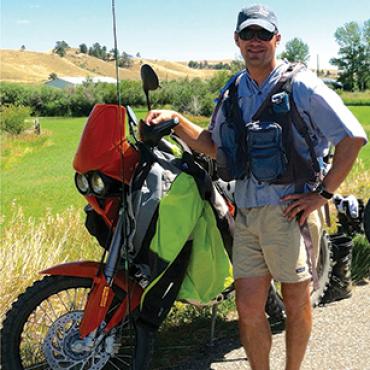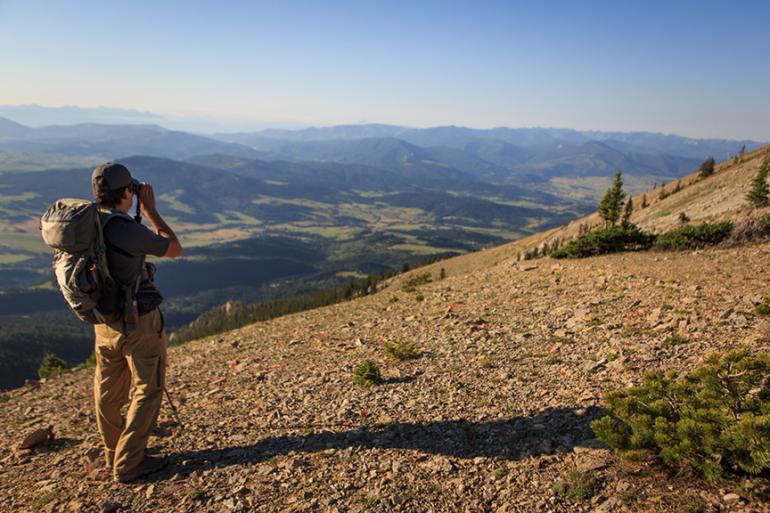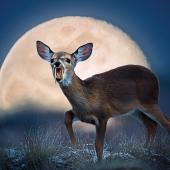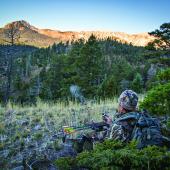Never Too Early
Among Bozeman’s eclectic array of outdoor passions and pursuits, it pays to prioritize deer and elk hunting—nothing else can result in the kind of ongoing material gain like meat in the freezer. Sure, a day of skiing deep pow or summiting a lofty peak can really satisfy, but elk burger thawing on the counter means a delicious, healthy dinner upon your return.
For far too long, I constrained my big-game hunting efforts to the dates marked on the Montana Fish, Wildlife & Parks (FWP) official hunting-season calendar, and the result of those last-minute efforts hardly resulted in tasty red meat in the pan. Tags went unfilled and so did my hunger for local fare.
That all changed when I uncovered one of the sacred tenets of big-game hunting success: hunting is a year-round pursuit. So many hunters only think about their quarry during the relatively brief period between early and late fall—but if you want a successful hunt, it pays to start months in advance, in front of your computer (of all places). Here are some tactics that, with some luck, will result in a year’s supply of steak on the grill and burger on your bun.
Embrace Technology
Gone are the days of going to your local FWP office or sporting-goods store to pick up reams of paper regulations and statistics—all of this information is online. With access to computers, smart phones, or tablets, all you need is time and a willingness to study. Do the research at the FWP website (fwp.mt.gov). Evaluate success rates for different areas, and learn where you can go to improve your luck. While you’re at it, use Google Earth to scout zones and terrain. You can learn a lot about where you’ll be hunting from the comfort of your couch—maybe even create some routes in your GPS.
Make the Deadline
The deadline to apply for some deer and elk permits now occurs around mid-March. Moose, sheep, goat, and bison permits are due May 1. The deadline for special-drawing B tags (doe/calf-only) is June 2 this year. Dates and regulations are subject to change, so stay current and check in with fwp.mt.gov to be in the loop. Better yet, sign up for their email updates. The key is to know these deadlines are looming and plan your research accordingly. Start thinking about what you want to apply for well before the deadline.
Glass, Glass, Glass
Don’t worry, not all of your pre-season hunting will be done in front of a computer screen. Spring is a great time to begin glassing the mountains where you hunt—for shed antlers as well as live animals. Invest in good optics—ideally, both binoculars and a spotting scope—and look for tracks in the mud and snow. Well-used game trails in soft spring earth can also be spotted from a distance. Scout areas where you can find game at different times of the year. Elk and deer go about making a living whether we’re around to pursue them or not—if you want to see more in front of your weapon during hunting season, see more through your glass during the off-season.
Gear Up & Shoot Straight
Use those odd weekday evenings in April and May to poke through your gear and review your system. Where can you upgrade? Can you shed any weight? As soon as the weather breaks, start shooting your bow or rifle—you can’t get too much range time. Shoot sitting, standing, prone, leaning to one side; in short, mimic all the postures you might encounter in the field. Think about the caliber and cartridge you use, making adjustments for accuracy and distance. Make your gear more effective and efficient, your shooting more accurate, and you’ll improve your odds tremendously.
Get Fit
Run. Do calisthenics. Try some CrossFit. Do yoga. If you’re like me, you’ll ski all winter, hit the gym during spring, and trail run in the summer. The point is to do your best to stay in shape year-round. If your last hunt was successful, the easiest part of maintaining your health and fitness is the eating—you’ll have difficulty finding meat anywhere on the planet that is any healthier than southwest Montana’s deer and elk.












